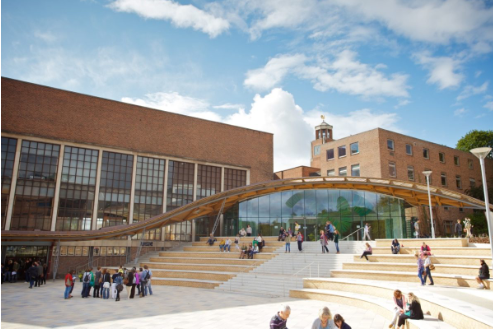Scientists from the University of Exeter, in the U.K.; Switzerland’s Ecole Polytechnique Federale de Lausanne (EPFL); and Saudi Arabia’s Center of Excellence for Advanced Materials Research claim to have developed a perovskite solar cell with an efficiency of 21.6% by using concentrator photovoltaic technology.
A triple-cation based, n-i-p structured perovskite cell, described in the paper Increasing efficiency of perovskite solar cells using low concentrating photovoltaic systems – published in the Royal Society of Chemistry’s Sustainable Energy and Fuels – is said to have been developed at low levels of solar concentration.
According to the researchers, standard single-junction perovskite cells usually reach efficiencies of 21% but only in devices smaller than 1mm². “The use of concentrator photovoltaics with a 0.81mm²-sized perovskite solar cell (PSC) further increased the efficiency levels up to 23.1% opening up a new line of research combining PSCs with low concentrating photovoltaic technologies,” the authors of the study wrote.
Larger surface, low concentration
The cell the team developed, however, has a much larger surface – 9mm² – which means the efficiency is necessarily lower than 23.1%, but at the same time higher by around 0.6% than standard perovskite cells.
For the concentrator PV technology, the researchers used a kaleidoscope with a 12mm² breaking-symmetry top, truncated pyramid geometry and a 3mm² exit aperture. They observed the solar cell’s best performance was obtained with low concentration levels, which avoided the internal series resistance effect which is particularly strong under high illumination and causes a decrease in peak power and, as a result, device fill factor. “Therefore, it will be possible to design a solar cell for low concentration levels through the reduction of the series resistance,” the paper stated.
The concentrator PV unit featured an optical element on top of the solar cell, bonded using ultraviolet-curable optical adhesive. The alignment of the optical element was said to be essential for the success of the technology.
Low stability
The performance of the cell was analyzed and measured with a Newport Class-A solar simulator at EPFL which had a maximum illumination area of 100mm² for a nominal working distance of 200mm. “At 1000 W/m² the maximum power of the CPV [concentrator PV] unit was found to be 15.88 mW, which is very high compared to the 1.88 mW obtained via the PSC,” the report stated.
The authors of the study said solar concentration, however, also had the undesired effect of accelerating temperature rise within the perovskite cells, exacerbating their well-known thermal instability.
“We observed that the performance sharply drops during the initial 10-minute period due to the non-recoverable permanent degradation of the device occurring at the beginning of its operation, also referred to as the device burn-in,” the researchers said. They said they observed good stability under 1.78 sun irradiance for five hours, with the cell maintaining 81% of its efficiency after the burn-in period.
“Further studies need to be carried out to explore these impacts,” added the research team.






